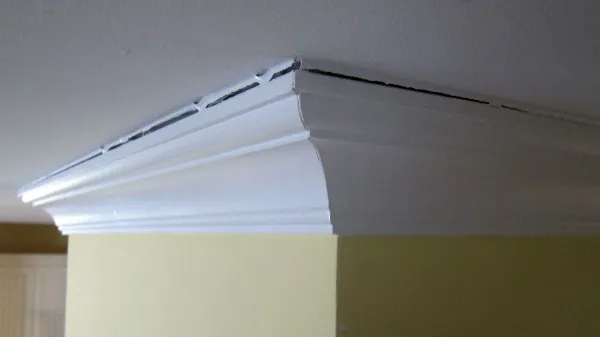As winter sets in, homeowners often encounter the unwelcome surprise of “Ceiling Cracks In Winter.” Learn why this phenomenon occurs and discover effective strategies to protect your home from the challenges brought by the cold season.

The Intricacies of Ceiling Cracks in Winter
Understanding Temperature Fluctuations
“Cold and Cracked: Ceiling Cracks In Winter” often stem from the natural expansion and contraction of building materials in response to temperature changes. As outdoor temperatures drop, building materials contract, potentially leading to the formation of cracks in ceilings.
Factors Contributing to Ceiling Cracks In Winter
Age of the Building
Older homes are more susceptible to “Ceiling Cracks In Winter.” Over time, the structure may have experienced wear and tear, making it prone to cracks. Regular inspections become essential for identifying and addressing potential vulnerabilities.
Insufficient Insulation
Inadequate insulation allows cold air to infiltrate your home, leading to temperature variations that contribute to ceiling cracks. Addressing insulation issues is a proactive step toward minimizing the impact of winter weather on your home’s structural integrity.
Identifying and Repairing Ceiling Cracks
Visual Inspection
Perform a thorough visual inspection of your ceilings to identify any existing cracks. Hairline cracks may seem minor, but they can develop into more significant issues over time. Prompt identification allows for timely repairs.
DIY Repairs
For minor cracks, DIY repairs may suffice. Use high-quality caulk or joint compound to fill the cracks, ensuring a smooth and seamless finish. However, it’s crucial to monitor the repaired areas and address any recurring issues promptly.
Professional Intervention
Extensive or recurring ceiling cracks may necessitate professional intervention. A qualified contractor can assess the structural integrity of your home, identify underlying issues, and implement effective solutions to prevent further damage.
Preventive Measures for a Crack-Free Winter
Humidity Control
Maintaining optimal indoor humidity levels helps minimize the impact of temperature fluctuations on building materials. Use humidifiers or dehumidifiers as needed to create a stable environment within your home.
Proper Ventilation
Adequate ventilation is key to preventing “Ceiling Cracks In Winter.” Ensure that your home is well-ventilated to regulate moisture levels and reduce the likelihood of temperature-related structural issues.
Regular Maintenance
Consistent home maintenance, especially before the onset of winter, is essential. Address any existing cracks, inspect insulation, and seal gaps to fortify your home against the challenges of the colder months.
Read too: Understanding and Addressing a Crack in the Basement Ceiling: Unveiling the Dilemma
Conclusion: Embracing a Crack-Free Winter
In conclusion, understanding the dynamics of “Ceiling Cracks In Winter” empowers homeowners to take proactive measures. From identifying vulnerabilities to implementing preventive strategies, a well-maintained home can withstand the challenges posed by temperature fluctuations. By embracing a crack-free winter approach, you ensure the longevity and structural integrity of your living space.